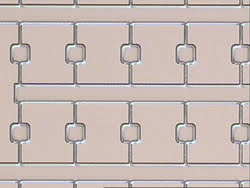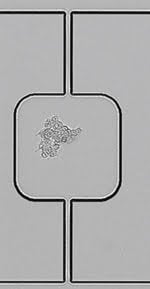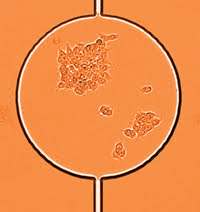Using the right optics for microfluidic work can make the technology more flexible, more modular and more adaptable to changing experimental conditions.
Jeremy Goldstein, Navitar Inc.
Research in biotechnology and biopharmaceuticals can be a daunting process, involving costly reagents, complex interactions and time-consuming analysis. Fortunately, an emerging family of technologies promises to cut some of those expenses, including manpower. Microfluidics, which involves the passage of fluids through microscopic capillaries on cards, in cartridges, on chips and even incorporated into compact discs, reduces the usage of biological samples and reagents and standardizes several basic procedures. In doing so, it releases life scientists from the need to oversee instrumentation and affords them the time and the freedom to design, analyze and interpret their experiments.
The key to interpreting experiments based on microfluidics technology, as with other approaches, is the ability to visually analyze samples and reactions. In some cases, such analysis requires the undivided attention of trained scientists using highly sophisticated — and, inevitably, expensive — microscopes. Often enough, however, microfluidics experiments require repetitive analysis of the type that can be performed automatically by collecting digital images and processing them with image analysis software.
High-magnification optics manufactured by Rochester, N.Y., optical supplier Navitar can carry out such tasks without requiring the additional objectives, eyepieces and filters associated with conventional high-power microscopes. The flexibility of the lenses permits makers of microfluidic devices to eliminate the size limitations that have previously bedeviled the technology.
Transporting liquids
Microfluidic devices rely on different approaches to transporting liquids. One, developed by Caliper Life Sciences of Hopkinton, Mass., uses electro-osmotic flow to move liquids through capillary tubes. Another, from Gyros AB of Uppsala, Sweden, and from Tecan Inc. of Zurich, Switzerland, relies on centrifugal flow. The third, developed by the University of Washington in Seattle and licensed by Micronics Inc. of Redmond, Wash., involves laminar flow diffusion with nonturbulent mixing. What the three methods have in common is that they push liquids through channels no wider than several microns in diameter.
Microfluidics technology offers several advantages. It permits integration of several experiments on a chip, card or other device and, hence, speeds work flow. It also requires markedly smaller amounts of sometimes limited biological samples and often expensive reagents. It provides standardized forms of analysis that are independent of individual users, and it is user-friendly. Because it deals with small volumes, it proves particularly useful for situations in which huge numbers of samples must be tested.
The life sciences community took its time accepting microfluidics. But now that it has done so, it applies the technology to a wide variety of fields. In genomics, for example, a microfluidic chip made by Applied Biosystems of Foster City, Calif., can carry out up to 384 real-time polymerase chain reaction operations simultaneously. Proteomics benefits from a microfluidic chip from Fluidigm Corp. of South San Francisco, Calif., that enables scientists to crystallize proteins more efficiently, and from a lab on a compact disc from Gyros that enables protein characterization and drug discovery. The Bioanalyzer from Agilent Technologies Inc., headquartered in Santa Clara, Calif., meanwhile, is a lab-on-a-chip system that performs RNA and DNA analysis, protein analysis and flow cytometric analysis of cells.

Micron-size wells with feeder and capillary channels deliver cell media to live cells.
Possible applications of microfluidics do not stop with drug discovery. Clinical scientists now see a powerful future in diagnostics for the technology. It could, for example, reduce the cost and increase the capabilities of genetic testing in areas such as population studies of inherited genes tied to disease and evaluation of drug candidates. And eventually, vendors imagine that medical practices will use disposable microfluidic devices in their offices to process complex biological samples in minutes to determine a patient’s risk of incurring a genetic disease or having a reaction to a new drug.
The various forms of microfluidic technology have one point in common: All rely on image analysis to reveal the results of experiments carried out with them. Often enough, that analysis demands the eyes of a trained biologist, who can recognize the subtle differences among images. However, several tasks in visual analysis are repetitive and, therefore, lend themselves to automated analysis of digital images.
Automating image analysis
At present, most life scientists working with microfluidic technologies use traditional microscopes for their image analysis. These devices have several positive features — accuracy and reliability, in particular. However, because they are built for general-purpose use, they include additional objectives, eyepieces, filters and illumination functions that are unnecessary for microfluidic studies. The fact that most microscope systems have a staging area that accepts only standard 1 × 3-in. glass slides adds an extra complication and presents a limitation on size. Designers of microfluidic technology must create their chips within that limitation.
Using high-magnification optics can overcome size limitations. Because these optics do not use microscope staging barriers, they can image chips much larger than 1 × 3 in. Also, instrument manufacturers can shrink the size of their equipment because the optics are application-specific. This saves space in the laboratory, because a bulky microscope setup does not have to be squeezed into a box.

A square well in Nanopoint’s Celltray contains live mammalian cells suspended in cell media. Photo courtesty of Nanopoint Inc.
The company’s lenses offer other advantages to life scientists who use microfluidic technology. Most notably, they permit users to incorporate the modularity and flexibility that, because they help to reduce the price of automated laboratory systems, introduce microfluidic technology for use by researchers and scientific teams that would not usually be able to afford it.
The optics that can aid in microfluidic applications originally were designed for the high-precision and highly repeatable needs of the semiconductor industry; thus they are modular in design. Users can set up a system that meets their needs by choosing from a variety of models and accessories. For example, attachments at each end of a zoom lens enable variation in the working distance to, and magnification of, samples. Users also can apply a polarization system, inject a laser, superimpose a reticle, add differential contrast, study fluorescence and take simultaneous views with several types of cameras. The addition of detents or motors and software also permits the calibration of zoom settings, which can be repeated reliably to measure objects of different sizes automatically.

This round well contains live mammalian cells in dye.
Modularity also has an advantage for original equipment manufacturers (OEMs) as they build equipment for image analysis of microfluidic systems. It permits them to increase their range of products without having to make specifically new components. Beyond that, modular zoom and fixed magnification lenses allow OEMs to customize their products easily.
The optics also allow manufacturers to build flexibility into their automated equipment. Imagine that a potential user expects to make changes in the design of a microfluidic system, or to apply the equipment to studying biological processes that are scarcely understood. In these cases, designers can incorporate a zoom lens with a modular design into the system, thereby giving it the flexibility to make changes easily. That flexibility also allows designers and manufacturers to look ahead into the unknown, by considering next-generation equipment even before they ship the first generation. They can assemble an automated system that includes appropriate modular zoom optics to enable users to rearrange, retool and reuse the setup as the sizes of microfluidic systems change and new imaging methods emerge.
Use of the right lenses enables adjustment to changing conditions in the laboratory. The addition of a high-quality zoom lens can give researchers and development scientists the ability to inspect a variety of microfluidic chips without having to perform advance measurements and calculations or to stock a number of fixed objective lenses. The design for these lenses comes from experience in designing for the semiconductor industry, whose chips can vary in size by a factor of more than 10.
Taken in combination, the modularity, flexibility and adaptability of optics can have an immediate and positive impact on the bottom line for OEMs and on the price of their microfluidic imaging systems. That makes microfluidic technology affordable for industrial and even academic research groups that might not be able to afford systems that rely on traditional optics. Research and development teams involved in everything from basic research to drug discovery to clinical studies can hope to benefit markedly from the new approach to thinking small.
Meet the author
Jeremy Goldstein is president of Navitar Inc. in Rochester, N.Y.